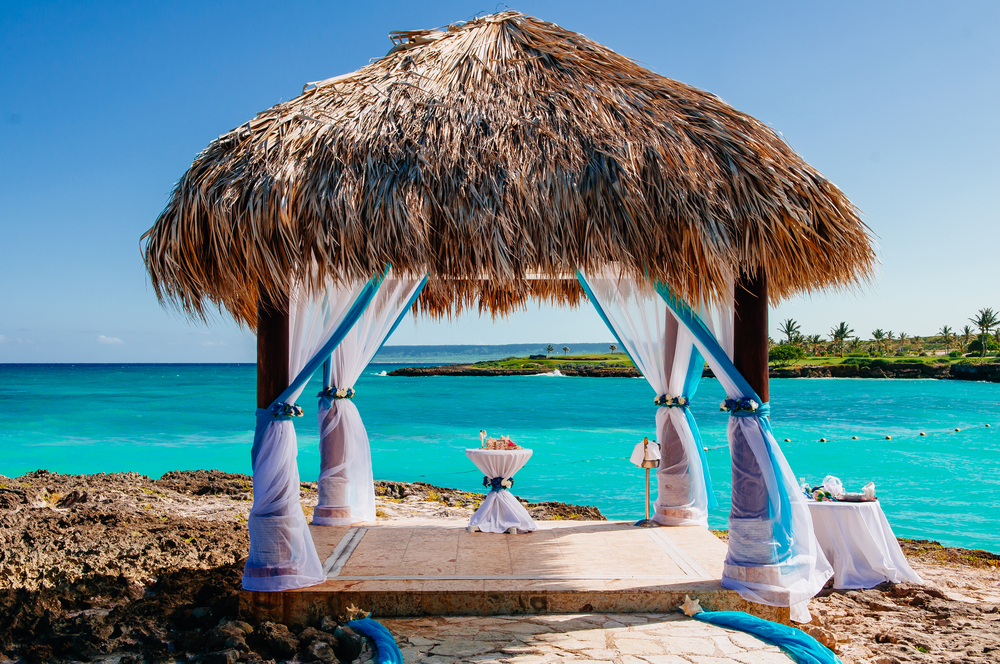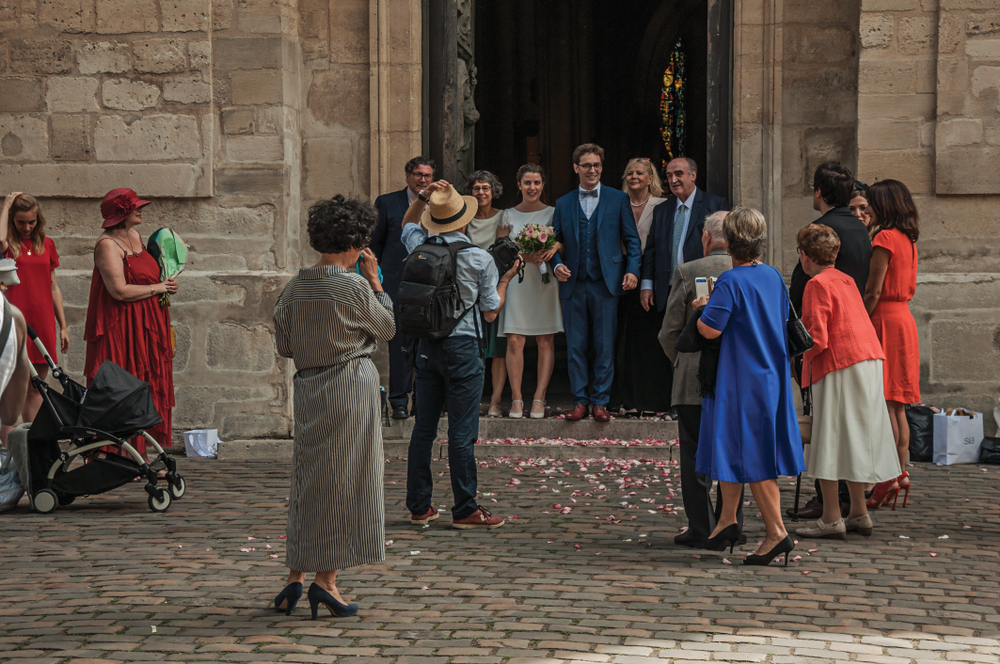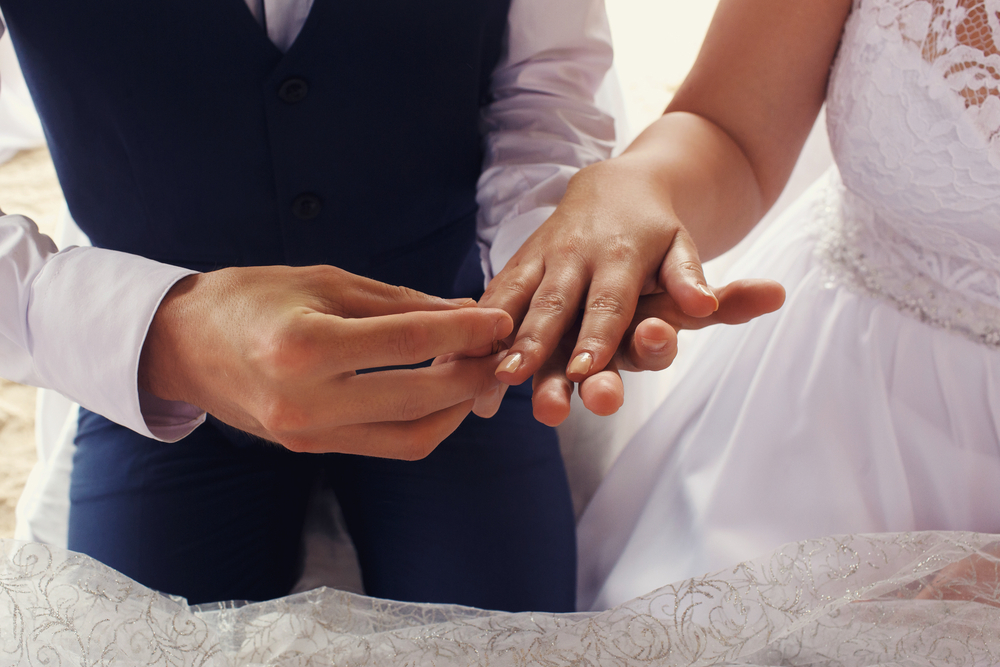There are few cultural experiences that are more charming and enlightening than a wedding, and every country and community around the world has its own traditions that make that special day even more special.
Whether you or your partner have a personal connection to the Dominican Republic, you’re attending or planning a wedding there soon, or you’re just interested to learn, there are a lot of fascinating and beautiful customs that you might expect to see at a marriage ceremony in this stunning Caribbean country.
In this article, we’re going to cover the 10 most important Dominican wedding traditions that you should know about, as well as a lot more fascinating information about Dominican culture, food, and music that will make an appearance on the big day.
Where Do Dominican Wedding Traditions Come From?

Before we get into some of the various Dominican customs, it’s worth exploring where they actually come from and how they come about.
As with most nations around the world, the rich tapestry of life and culture in the Dominican Republic is woven from many different threads. When it comes to marriage and all the accoutrements that go with it, some traditions date back many years while others have been more recently influenced by modern expectations and conventions.
Culture and Heritage
The historic indigenous people of the Dominican Republic were known as the Taíno, and their culture is continued by the communities of their descendants and revivalist communities as well. They were the original inhabitants of the islands we now know as Haiti, Puerto Rico, the Bahamas, Jamaica, Cuba, and the Dominican Republic.
For centuries, though, the country has been made up of an intricate blend of different cultures, since European people first settled on the island – and these influences are still evident today.
It was actually home to the first European Settlement in the New World, Santo Domingo, which was founded in 1493. Very soon after this, African people were brought into the country as part of the transatlantic slave trade and began to have their own impact on life and customs in the country.
Now, Dominican traditions are a beautiful blend that brings together elements of Taíno, European, and African heritage into a culture that is very much its own.
Language and Religion
Or course, a big part of the traditional elements of a wedding will be heavily influenced by the religious practices of the people, as well as the language that they speak.
In the Dominican Republic, the vast majority of people speak a local dialect of Spanish. Dominican Spanish is similar to the Spanish that is spoken in the Canary Islands, but it also incorporates words and phrases from the Taíno native language, Arawak.
As for religion, Dominican People are Catholic for the most part, which was introduced and fostered by the first Spanish settlers. Over 60% of the country identifies as Roman Catholic, with just under 30% being Evangelical, 10% being atheist, and only 2% following any other religion.
You will also like:
10 Dominican Wedding Traditions
1. The Proposal

Before we even get to the wedding, there’s the proposal to talk about first. In this area, things are pretty similar to a lot of other Catholic countries in that it is usually the man who does the proposing. It’s not essential, though, and the actual means and moment that you choose to propose are unique to every person.
2. Despedida de Soltero and Despedida de Soltera
Another tradition that occurs before the special day itself is relatively similar to what we know as a Bachelor/bachelorette party. Despedida de Soltero/Soltera literally translates to a “farewell to being single” in the masculine and the feminine, and these traditions are common in many Spanish-speaking countries around the world.
It is a party that allows the bride and groom to bid farewell to their single selves before embarking on the rest of their lives together, and it can take many forms. Some couples will have a joint party that lasts for multiple days, while others will individually celebrate with friends or family.
3. The Church
Traditionally, the family of the bride is responsible for the majority of the wedding preparations, and the majority of people in the country still choose to get married in a church. Recently, however, smaller gatherings and civil court ceremonies are becoming more popular.
In the past, only a Catholic Church priest was allowed to actually marry a couple in a church, and non-Catholic couples would have to sign the legal paperwork in front of a Justice of Peace in a judge’s chambers or in a civil court before attending the ceremony. Fortunately, this rule was changed in 2012, and other religious ceremonies are now more common.
In the church itself, the guests sit wherever they want and there is no “side” for either the bride or the groom.
4. The Bride and Groom

One of the interesting quirks of a Dominican wedding is that there is no expectation for the bride and groom to hide from each other before the ceremony takes place.
In fact, it is traditional for wedding photos to be taken earlier in the day, so that the families and the happy couple have a chance to meet, mingle, and make memories before entering the church.
5. The Wedding Party
Large wedding parties are not really a thing in Dominican culture, and there are traditionally no bridesmaids at all. You will usually have a flower girl and a ring bearer, who are often young members of the family, and sometimes a child to bring an elegant white bible up to the altar.
A very cute tradition for the children at a wedding is that they sometimes dress up just like the bride and groom, just in much smaller versions of their outfits.
6. The Arras
A slightly more unique tradition in the Dominican Republic is known as the “arras”. These are a collection of 13 coins that are placed on a silver tray and carried up to the front of the church. The coin bearer is usually a young boy, and he will walk alongside the ring bearer and the flower girl.
These coins (most often 10-cent coins) will be handed to the priest, who then passes them to the groom to give to his new bride. This is to represent the pledge the couple is making to provide for each other, as well as signify the fact that they will now share all that they have equally between them.
7. Wedding Gifts
Unlike in a lot of other cultures, it’s actually a little embarrassing to turn up at a Dominican wedding WITH a gift, rather than without one. Wedding gifts are not taken to the wedding itself – instead, they are supposed to be delivered to the home of the bride before the day.
8. Padrinos and Madrinas

It is very traditional for the bride and groom to have a pair of “godparents” for their wedding, known as the “padrinos and madrinas”. Their job is to act as a witness to the ceremony itself, and they sign the marriage certificate with the couple.
Usually, the padrino will be the father of the bride and the madrina will be the mother of the groom, but it can be anybody that the couple chooses.
9. Ceremonia Cantada
A really beautiful traditional aspect of most Dominican weddings is the Cermonia Cantada. This is when the guests come together to sing songs, and it often begins with the groom singing directly to his bride. A band may accompany the music but it is all about the voices, and the songs are generally those of love, romance, and the heart.
Some Dominican weddings will be almost entirely entertained by sung music, without any instruments at all.
10. Merengue
When it comes time for the first dance, you can expect to see and hear merengue at pretty much every Dominican wedding. It’s the name of both a style of music and the national dance of the country and it is romantic, vivacious, and full of enthusiasm.
Partners hold themselves closely together as they move, and follow a pattern known as a “danced walk”, constantly twisting and turning around the dance floor.
Once the couple has had a chance to dance together, “la hora loca” can begin. This is “the crazy hour”, where all guests are encouraged to dance and enjoy themselves to their hearts’ content.
What Kind Of Food Do You Serve At A Dominican Wedding?
Years ago, the food and drinks at a Dominican wedding reception were pretty minimal, with just a glass of champagne and some cake on offer, but most people will now sit down for a bigger feast.
Some of the popular Dominican dishes that you might serve include:

- Sancocho. Perhaps the most well-known Dominican dish, this hearty stew can contain up to seven different kinds of meat and is often served with avocado, hot sauce, and Arroz Blanco (Dominican rice)
- Mangú. A very popular dish made up of mashed green plantains, generally served with vinegar-soaked red onions, meat, eggs, and cheese. Altogether, they’re known as “Los Tres Golpes” (The Three Strikes). While this is usually a breakfast meal, it does appear on lunch and dinner menus as well.
- Habichuelas guisadas. These stewed beans are a Dominican staple, usually made with red kidney beans, pinto beans, or cranberry beans and served with rice.
- Pollo Guisado. This is an incredibly tender version of braised chicken in a rich and highly flavorful sauce.
- Tostones. These are a delicious way to enjoy plantains, and they could almost be thought of as the French fries of the Dominican Republic.
- Bizcocho Dominicano. Few Dominican weddings would be complete without the inclusion of the Dominican Cake. It plays a pretty central role in many celebrations in the country, and it contains a lot of fruity flavors. The cake itself has both orange and vanilla flavoring, as well as a sweet pineapple filling.
What Kind Of Music Would You Play At A Dominican Wedding?
At the heart of most Dominican parties will be Merengue music, which is native to the country. While the traditional style is based around the accordion, the güira (a metal sheet percussion instrument), and the Tambora drum, modern Merengue includes electronic instruments and influences from genres like rock and roll and salsa.
The people of the Dominican Republic are also big fans of Dominican rock, hip-hop, and reggaeton. You’re also likely to hear the Dominican genre known as dembow, which is somewhat similar to dancehall music and reggaeton but faster in pace and more consistent in rhythm.
Final Thoughts
The Dominican Republic is known for its vibrant culture and positive traditions, many of which are on display at its beautiful wedding ceremonies.
While much of the day might be similar to what you would expect to see in other countries with a mostly Catholic population, there are many things about a Dominican wedding that really stand out from the crowd.
Related posts:
15 Simple Engagement Proposal Ideas That Will Melt Her Heart
15 Stunning Rustic Winter Wedding Ideas to Inspire Your Big Day
Groom Attire Ideas: 15 Tips & Inspiration for Your Big Day
Ultimate Guide to Muslim Weddings - 15+ Essential Muslim Wedding Customs You Didn't Know About
15 Gorgeous October Wedding Ideas for a Dreamy Fall Celebration
30 Elegant Wedding Nail Ideas for Every Bride

Serena & Dominic are a married couple and parents to 3 wonderful children. They plan weddings, run multiple small businesses, and curate wedding events.
By giving you everything you need to make your dream wedding attainable, you can eliminate stress, get the ‘wedding glow,’ and focus on spending this rocking day with the person you adore. Discover their podcast for more information




